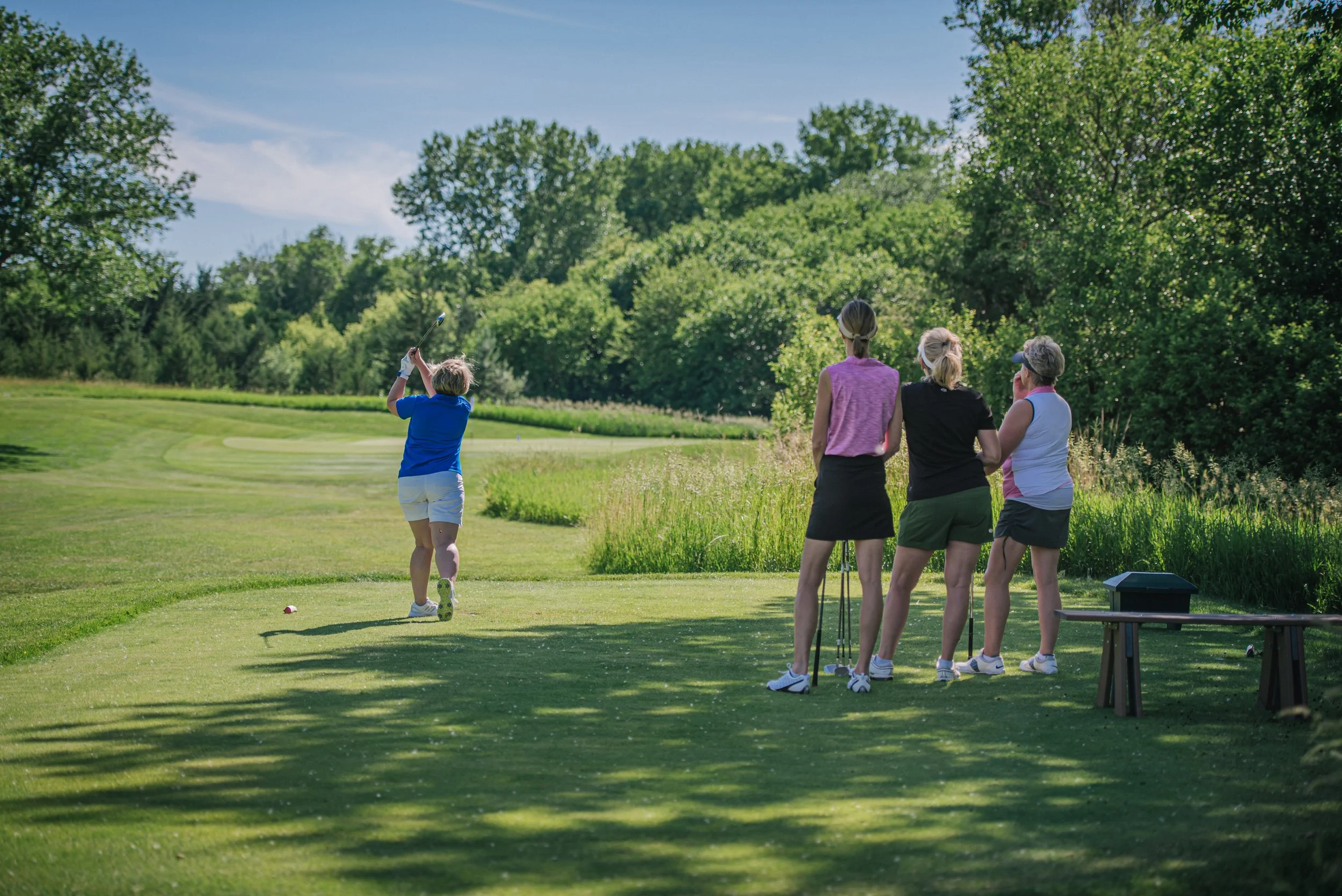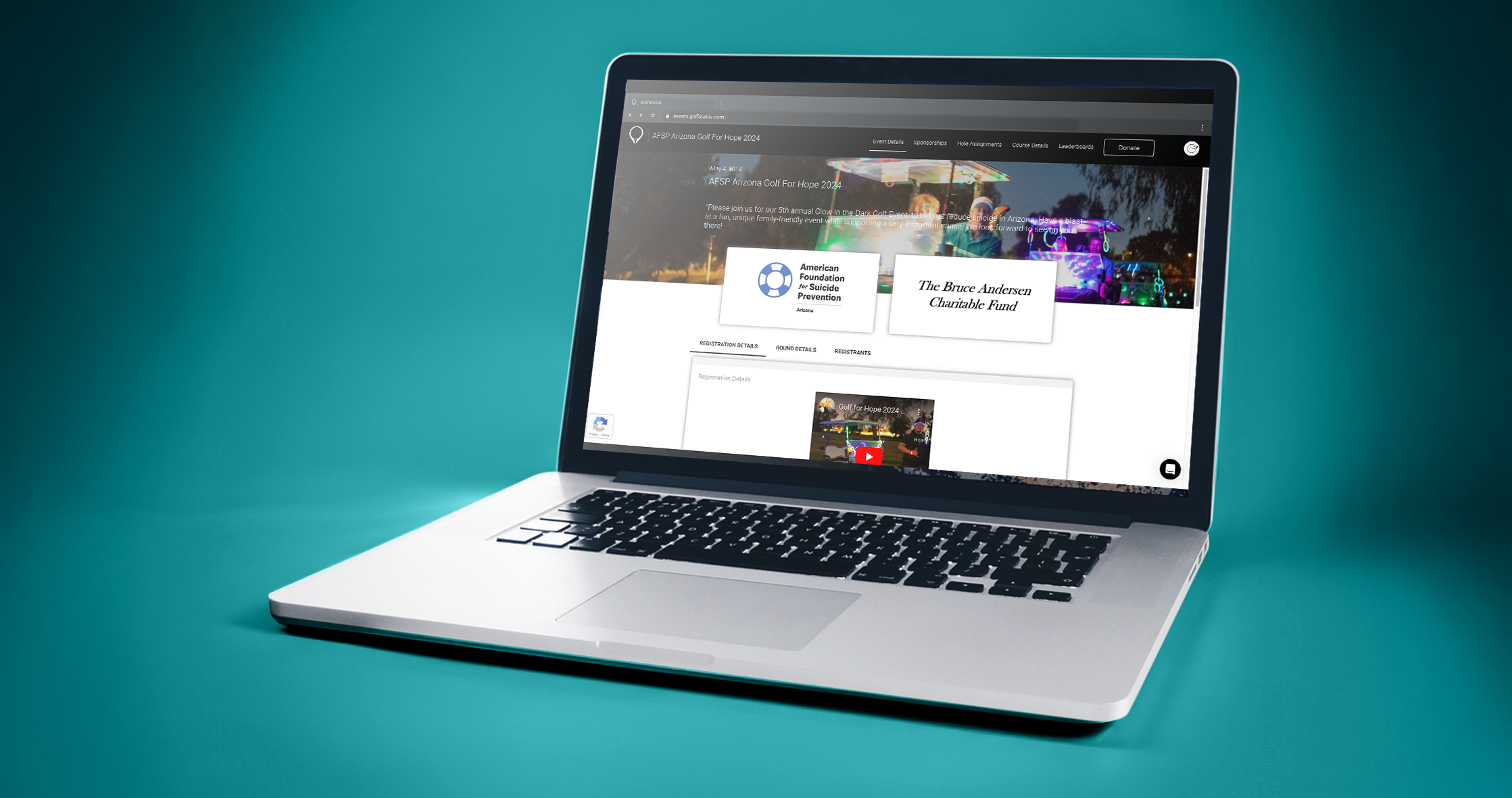partner snapshot
What began as a 10-week fundraising campaign for a Leukemia & Lymphoma Society (LLS) “Man of the Year” campaign in 2017 quickly evolved into something much bigger. Jake Peacock and Steve Sullivan have been friends for years, so when Steve started his campaign in honor of his mom, Martha, who was battling acute myeloid leukemia (AML), he asked Jake to be part of it.
Jake has been a golf professional since 2009, so naturally, he suggested doing a golf tournament to contribute to the campaign. Jake’s mom, Jeanne, had beaten breast cancer a few years prior, so he understood the need to do something to help. The first year, the golf outing brought in $15,000 of the $50,000 total raised as part of Steve’s campaign, dubbed “Martha’s Son Makes a Run.”
The next year, Jake ran the “Jeanne’s Journey” campaign that raised $72,000, with the golf event as the main fundraiser for the campaign. But Jake and Steve weren’t done.
Left: Jake with his mom, Jeanne. Right: Steve with his mom, Martha.
the challenge
The next few years, the duo decided to keep running the golf event to benefit the LLS. Then, in 2020, Jake’s mom’s cancer returned and had spread. Sadly, she passed away in June of 2021. Jake and Steve decided to redirect the golf tournament to raise funds for research at the Indiana University Melvin and Bren Simon Cancer Center in memory of Jeanne and in honor of Martha. They partnered with the IU School of Medicine to create a directed fund for research, cutting through the red tape and administrative burden of creating a standalone 501(c) organization.
“We decided we wanted to keep going until we find a cure,” Steve says. “We hope we don’t have to do the golf outing at some point, but want to keep raising funds until then.”
The two continued to run the tournament on their own, leaning on personal connections, community support, and a passion for making an impact. Yet as the event grew in size and scope, it became clear that managing registrations, tracking donations, and communicating with sponsors using spreadsheets and emails wasn’t scalable. Jake is a seasoned golf industry veteran, and knew they needed to level up the event experience, not just to raise more money, but to create a smoother, more professional, and more meaningful experience for everyone involved.
Childhood friends Steve Sullivan and Jake Peacock joined forces to raise over $500,000 through golf for cancer research.
the solution
In 2022, Jake returned to Victoria National in Newburgh, Indiana as the head golf professional. Victoria National is part of Dormie Network, a national network of private destination golf clubs, and GolfStatus’ sister company. He heard about what GolfStatus could offer to charity golf events and thought it was just what the Jeanne and Martha Fore a Cure Golf Outing needed to scale, so they came on board for the 2024 event.
the results
The goal for the 2024 Jeane and Martha Fore a Cure Golf Outing was $75,000. But thanks to the tools offered by GolfStatus and Dormie Network Foundation, the tournament blew past its goal to raise over $92,000, bringing the historical total to over $500,000 raised for cancer research and honoring Jake and Steve’s mom’s battles with cancer.
Golf Event Management Platform
Right off the bat, Jake and Steve used GolfStatus to streamline registration, collect payments online, and create a professional, mobile-friendly event site that simplified the process for golfers and sponsors alike. Plus, with real-time bank account visibility and centralized data, gone were the days of piecing together payments and registrations from emails and sticky notes.
“It’s definitely different being on the other side of a tournament,” Jake says, speaking from his years as a golf professional managing outside outings. “But using GolfStatus made it easy for both Steve and I to see where we stood financially, how many golfers were signed up, and not worry about sharing spreadsheets.”
Jake says that in the first few years, when he and Steve were handling registrations and payments manually, “We really didn’t even know who was coming!” Online registration simplified data capture and receipts, without requiring any effort from Jake or Steve. They could push the event website out to their networks and track registrations, sponsorships, and payments in the software’s back end. What’s more, they used the platform to easily collect payments on tournament day. “That was great,” Jake says. “All the funds were kept in GolfStatus until after the tournament, when it was sent on to the cancer center.”
Both Steve and Jake appreciated the responsive support provided by GolfStatus. “I honestly didn’t expect that level of support from a software company, but it was awesome,” Jake says. “I reached out to the team and was on a call with someone within five minutes.”
expanded sponsorship packages
By leveraging GolfStatus’ exclusive sponsorships and add-ons, Jake and Steve created additional revenue streams from the Technology Sponsorship, Pin Flag Sponsorship, and hole-in-one contests. “We had initially priced the pin flag package at $750, but someone reached out and said they loved the idea of the pin flags and wanted to more than double the contribution for the sponsorship, raising $1,650,” Steve says.
An online auction, consisting of donated items from folks within the Dormie Network, raised an additional $12,000, further boosting their fundraising total.
Jake and Steve leaned on personal connections to bring on sponsors. Steve’s employer, Allegion, a publicly traded security company in the Indianapolis area, started relatively small with the outing in its first year, contributing $1500. But leadership saw the engagement it drove in the workplace and continued to increase their support to $15,000 in 2024. “They saw the value in an employee doing something good because they were touched by cancer,” Steve says.
DORMIE NETWORK FOUNDATION SUPPORT
By working with GolfStatus, the outing unlocked additional support from Dormie Network Foundation. Donated Stay and Play Packages and Dormie Network memberships were auctioned and sold to raise significant dollars for the cause. Three donated memberships and two Stay and Play Packages were sold as part of the event, and a $15,000 gift from a previous tournament sponsor-turned-Network member helped take the outing’s impact to the next level.
“The tools from GolfStatus and the support from Dormie Network Foundation were critical in helping us scale the tournament,” Jake says. “It opened doors to more people to support the event and cause, and grow how much we can raise.” He credits these resources for helping bring in an extra $30,000 from the 2024 event, which the pair hopes to replicate in the future.
“Nobody else gives you the tools and credibility to raise as much as you can, as quickly as you can, like Dormie Network Foundation. Combine that with GolfStatus’ platform and support, and it’s an easy choice to partner with both of them,” Jake says.
personal connections
Jake and Steve want the event to be a great experience for everyone involved, while staying true to its grassroots spirit that honors Jeanne and Martha. “For whatever reason, our stories and experiences really resonate with people,” Steve says. He says they’ve had survivors and family members speak at the tournament, and even had the executive director of the Cancer Center share what the dollars raised are doing. “People want to know what their money is doing, so making the connection to the actual research and individual researchers has been amazing.”
Jake says the people and sponsors who participate understand what they’re trying to accomplish with the tournament. “Every year, I think I can get through the event without getting too emotional, but then we look out and see what’s been done and the impact it's having, and the emotion takes over,” Jake says.
Steve (fourth from left), Jake (fifth from left), and their families at the Indiana University Spirit of Philanthropy Awards.
what’s next
The outing continues to grow—and get attention for its contributions to cancer research. Jake and Steve were invited to be members of the IU School of Medicine Development Board and were nominated by the school for the University’s Spirit of Philanthropy Award, which they received.
With the 8th annual outing set for Monday, August 4, 2025, the event has a goal to break the $100,000 mark—and eventually, raise so much money for cancer research that the event no longer needs to exist. “I wish I never had to do this, but it’s the hand we’re dealt and we’re working to make the most of it,” Jake says.
Contribute to the Jeanne & Martha Fore a Cure Fund for Cancer Research.






















































